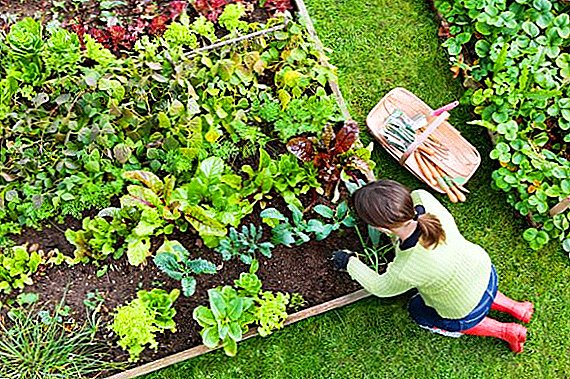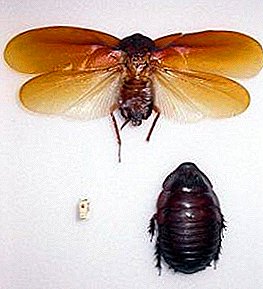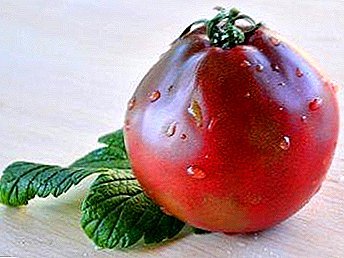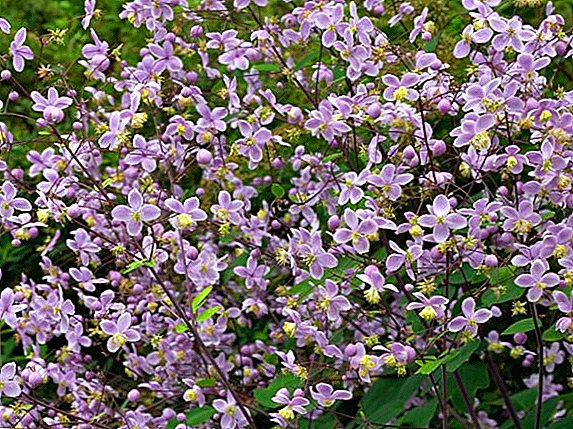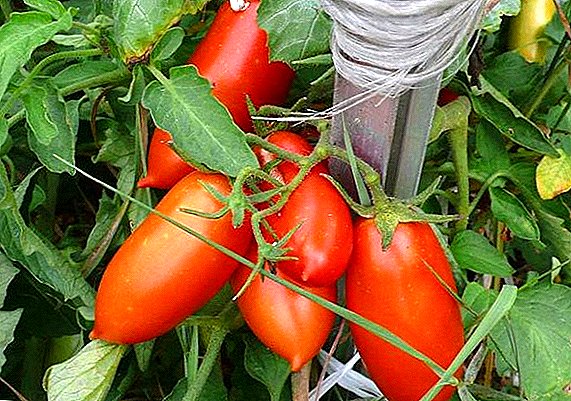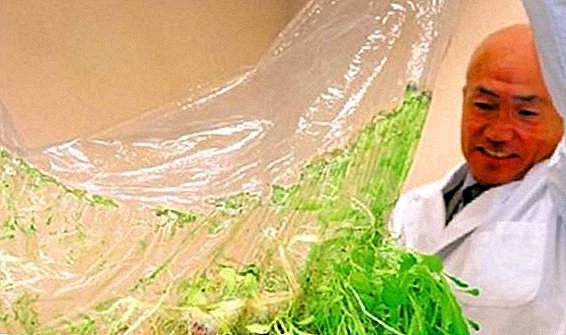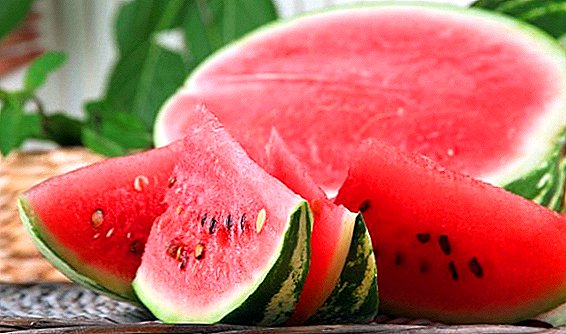 The French claim that watermelon is the food of angels. This berry is attractive not only taste. It is rich in fructose, folic acid, potassium, magnesium and vitamin C. It quenches thirst and charges you well with good mood and is an excellent summer delicacy. Consider everything about watermelons.
The French claim that watermelon is the food of angels. This berry is attractive not only taste. It is rich in fructose, folic acid, potassium, magnesium and vitamin C. It quenches thirst and charges you well with good mood and is an excellent summer delicacy. Consider everything about watermelons.
Description of watermelon and its composition
There are doubts about the question: what is the name of the fruit of watermelon. Oddly enough, but the watermelon refers to the berries, not fruit. The fruit of wild watermelon is quite small (250 g), round in shape and vaguely similar to the fruit of a cultivated plant. The mass of the cultivated plant reaches 16 kg, and as for the form, it can be both round, and oblong and even cubic. Fruits contain fiber, sugar, nitrogenous substances, fats, pigments, vitamins (A, B1, AT2, C, PP). Watermelon came to Kievan Rus in the 8th century from India, and its homeland is South Africa. There, this plant is still growing wild.
Types of watermelons
 There is a huge number of varieties of watermelons. They differ in growing conditions and taste of the fruit. The reduced period of ripening of the berry due to the climatic conditions of the territory leads, respectively, to a decrease in the size of the fruit and its taste. If you decide to grow a watermelon, you should choose the variety that best suits the given climatic conditions. Of all the varieties, it is possible to conditionally distinguish the following species: ordinary watermelon, watermelon colozint and square watermelon.
There is a huge number of varieties of watermelons. They differ in growing conditions and taste of the fruit. The reduced period of ripening of the berry due to the climatic conditions of the territory leads, respectively, to a decrease in the size of the fruit and its taste. If you decide to grow a watermelon, you should choose the variety that best suits the given climatic conditions. Of all the varieties, it is possible to conditionally distinguish the following species: ordinary watermelon, watermelon colozint and square watermelon.
Watermelon ordinary
Consider a watermelon as a plant and its botanical description. Watermelon ordinary refers to an annual herb with creeping stems. Flowers of same-sex yellow color appear in June - July. Leaves on long stalks, rough, pinnately-separated. The flesh of watermelon quenches thirst and has a diuretic, choleretic and anti-inflammatory effect.
The seeds of watermelon ordinary are divided into varietal and hybrid. Their difference in the inheritance characteristics of the parent plant. If varietal crops retain the size of the fruit, the ripening period and other indicators from generation to generation, then hybrids can effectively bear fruit only in the second generation, and with further use of seeds, you will get warped fruits and low yields.
Hybrids even surpass varietal watermelons in taste, resistance to disease and yield. Seeds of hybrids are indicated in the name by the symbol F1. Therefore, purchasing watermelon seeds for growing, pay attention to it.
Did you know? "Afroarbuz" - watermelon with black flesh, tasty and almost without seeds. "Kavbuz" - a pumpkin, smelling like watermelon.
Watermelon colozint
 Watermelon colozint refers to perennial herbaceous plants. The fruit has a diameter of about 10 cm yellow. The pulp of the fruit is bitter whitish. Grows like a weed in Turkmenistan. Fruits are harvested in October-November and used as a medicinal plant. The fruits contain phytosterolins, alpha-elaterin, glycosine calozint, citrullol, alpha-spinosterol, essential oil. It is used in the form of alcohol tinctures or dry fruit powder as a strong laxative. Seeds of colocinta are eaten.
Watermelon colozint refers to perennial herbaceous plants. The fruit has a diameter of about 10 cm yellow. The pulp of the fruit is bitter whitish. Grows like a weed in Turkmenistan. Fruits are harvested in October-November and used as a medicinal plant. The fruits contain phytosterolins, alpha-elaterin, glycosine calozint, citrullol, alpha-spinosterol, essential oil. It is used in the form of alcohol tinctures or dry fruit powder as a strong laxative. Seeds of colocinta are eaten.
Square watermelon
Square watermelon has some advantages compared to ordinary watermelon: firstly, it is more convenient to transport them, and secondly, such watermelon is more conveniently placed in the refrigerator. Square watermelons do not belong to a special variety, they are ordinary watermelons, but grown using a special form in the form of a cube.
After the berry has an onion size, it is placed in a specially made shape. It can be made of boards or plywood about 20 × 20 × 20 cm in size. The box must be opened on the one hand, which will make it possible to extract the berry at the end of ripening. One side should have a small hole and a slot. This will put a small fruit in the box, and the stem will pass through the cut. In the corners of the box should be holes 5-8 mm for ventilation. All openings should be smooth.
Berry will grow until it takes the form of a box. It is removed, left in the sun for 2-3 days to purchase a bright green color. And we got the long-awaited square watermelon. Similar experiments can be conducted with zucchini, pumpkins, cucumbers.
Useful properties of pulp, peel and seeds
 What is contained in watermelon? The pulp, rind and seeds of watermelon are a treasure of vitamins, amino acids and trace elements. First of all, the use of the body in the use of juicy pulp of watermelon is in a good mood and a surge of happiness hormones. It helps to relive stress more easily.
What is contained in watermelon? The pulp, rind and seeds of watermelon are a treasure of vitamins, amino acids and trace elements. First of all, the use of the body in the use of juicy pulp of watermelon is in a good mood and a surge of happiness hormones. It helps to relive stress more easily.
Berry is rich in antioxidants, beta-carotene, vitamin C and lycopene. Antioxidants are necessary for the body to combat oxidative processes, which prevents aging of the body, beta-carotene - to overcome physical, moral and emotional stress, vitamin C - to fight infections. The presence of lycopene in the chemical composition of watermelon is even greater than in tomatoes. This substance helps prevent oncology.
Watermelon seeds 25% consist of oil. Seed extract contains Omega 3 fatty acids; 6; 9, minerals and vitamins. Watermelon oil is used for healthy sleep, stress relief, normalization of sexual function in men. It is recommended to use every day 1 teaspoon of oil for a year.
Watermelon rind is used to make candied fruit. Ingredients Required: 1 kg of crusts, 1.2 kg of sugar, 2 glasses of water. To do this, peel the skin from the hard layer, cut into pieces and cook for 10-15 minutes. After cooling, placed in boiling sugar syrup in 3-4 doses. At the end, drying is carried out.
Did you know?Watermelon is often used for carving - artistic cutting. These creations can be seen in hotels.
Application in cosmetology
 The beneficial properties of watermelon are used in cosmetology for the care of the skin of the face. The pulp and juice are used to give the skin elasticity, smoothness, elasticity and smooth wrinkles. It should be noted that the use of this berry is suitable for all skin types. The use of watermelon for skin care will save money and achieve a positive result.
The beneficial properties of watermelon are used in cosmetology for the care of the skin of the face. The pulp and juice are used to give the skin elasticity, smoothness, elasticity and smooth wrinkles. It should be noted that the use of this berry is suitable for all skin types. The use of watermelon for skin care will save money and achieve a positive result.
Watermelon juice is very simple and easy to get. Soak a cotton cloth in the juice and apply on face for 15 minutes. After the procedure, wash with warm water and apply a moisturizer.
You can make cubes from frozen juice for use as a tonic. Make sure they are always fresh. Use them in the morning - it will refresh your skin after sleep. For oily skin can be applied tonic watermelon juice. Prepare it as follows: 1 tablespoon of sea salt, 1 tablespoon of honey, 1 glass of watermelon juice, 0.5 glasses of vodka.
Use watermelon juice with other fruit juices as a face mask. If you add a tablespoon of coffee grounds to the juice, you will get a wonderful scrub that will help cleanse the skin of dead particles and improve the complexion.
 Also, watermelon juice can be used in hair care. To prepare the mask, you need to grind the flesh of watermelon, add 1 teaspoon of almond oil. Apply a mask on the entire surface of the hair and hold for 20 minutes. Wash hair with shampoo. This mask will add shine and freshness to your hair.
Also, watermelon juice can be used in hair care. To prepare the mask, you need to grind the flesh of watermelon, add 1 teaspoon of almond oil. Apply a mask on the entire surface of the hair and hold for 20 minutes. Wash hair with shampoo. This mask will add shine and freshness to your hair.
In dietetics
What is useful watermelon? It is a valuable dietary product and an excellent antidepressant. Watermelon caloric content is 30 kcal per 100 g. The nutritional value of watermelon is very low in saturated fat, no cholesterol, low sodium, high potassium, vitamin A and C. The energy value of the melon is percentage of protein - fat - carbohydrate like 10: 4 : 93.
Since the pulp of watermelon is 90% water and is low-calorie, nutritionists recommend using it with overweight. Eating watermelon creates a feeling of satiety, so the diet is tolerated more easily. For fasting days, use watermelon pulp in a mass of 2 kg with the addition of rye crackers. Watermelon fasting not only helps to lose weight, but also effectively cleanses the body. Contraindication for such a diet is renal failure and kidney stones with a diameter of more than 4 mm.
The use of the useful properties of watermelon in traditional medicine
 Traditional medicine advises the use of watermelon pulp in the treatment of kidney stones. But it should be remembered that this method can both help and harm. Watermelon does not dissolve kidney stones, it helps to wash the kidneys. If the stones are small, then this method can lead to a positive result.
Traditional medicine advises the use of watermelon pulp in the treatment of kidney stones. But it should be remembered that this method can both help and harm. Watermelon does not dissolve kidney stones, it helps to wash the kidneys. If the stones are small, then this method can lead to a positive result.
It is necessary to carry out treatment in the midst of harvesting. For treatment, you need to eat watermelon flesh with black bread for a whole week. At the same time to expand the urinary tract is necessary to take a warm bath. This procedure should be carried out during the activity of the renal and hepatic biorhythms, between 17:00 and 21:00. A hot bath will expand the urinary tract, which will help relieve cramps and pain during the passage of stones.
Important! Watermelon is a powerful diuretic, therefore it contributes to the dissolution of salts and prevents stone formation.
Contraindications
The main danger that may lie behind the wonderful taste may be the content of nitrates in this berry. Excessive use of nitrogenous fertilizers leads to the fact that the fruits grow abnormally large and are dangerous to health. Harmful substances, getting into the human stomach, can cause poisoning and lead to more dangerous consequences. Therefore, be careful with early and very large berries.
Important! To limit the use of watermelon is recommended in the last months of pregnancy.
 With the restriction it is necessary to use watermelons for people with diabetes, diseases of the urogenital system, hypertension, edema. Watermelon can cause increased urination, which will cause the stones to be pushed into the ureter. This will cause an attack of renal colic.
With the restriction it is necessary to use watermelons for people with diabetes, diseases of the urogenital system, hypertension, edema. Watermelon can cause increased urination, which will cause the stones to be pushed into the ureter. This will cause an attack of renal colic.
Eat watermelon berries in food while observing the measure if you have health problems, and enjoy its wonderful taste.


